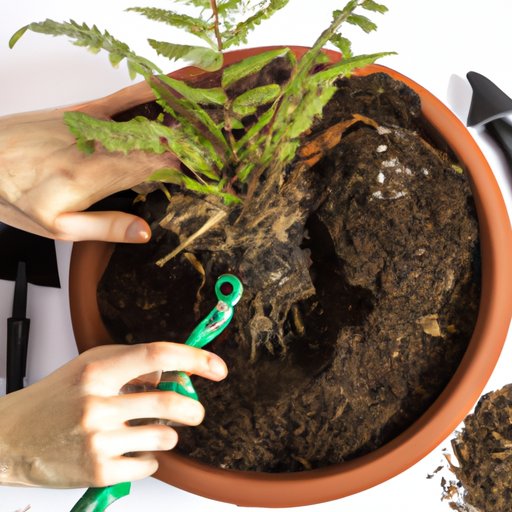Introduction
Ferns are a popular choice for both indoor and outdoor gardens, as they are attractive and relatively easy to care for. However, like all plants, they require some work in order to thrive. Properly caring for ferns is essential in order to ensure optimal health and growth.
Identifying the Type of Fern
There are many different species of ferns, each of which requires specific care in order to thrive. It is important to identify the type of fern you have in order to provide it with the best possible care. Some common types of ferns include the Boston fern, the Asparagus fern, and the Maidenhair fern.

Choosing the Right Potting Soil
The type of potting soil you choose for your fern will have a significant impact on its health and growth. It is best to choose a soil that is rich in organic matter, such as peat-based mixes. These soils provide the necessary nutrients and moisture for healthy root development, as well as helping to retain moisture in the soil.

Providing Adequate Light and Humidity
Ferns prefer bright, indirect light and high humidity levels. If your fern is indoors, you may need to invest in a humidifier or mist the plant regularly. For outdoor plants, keep them in a sheltered spot where they will receive some shade during the day.
Watering Regularly and Evenly
Ferns require consistent moisture, but not soggy soil. To achieve this, water your fern regularly, making sure to keep the soil evenly moist. Overwatering can lead to root rot, so it is important to check the soil before watering and only add enough water to keep it consistently moist.
Fertilizing Your Fern
Ferns benefit from a balanced fertilizer every two to four weeks. This helps to promote healthy growth and provide the extra nutrients necessary for optimal health. Make sure to follow the directions on the package carefully, as overfertilizing can burn the roots of the plant.

Pruning and Propagating Your Fern
Pruning away dead fronds is important in order to keep your fern looking neat and healthy. You can also propagate new plants by division or spore propagation. This is a great way to share your fern with friends and family, or simply to expand your collection.
Conclusion
With proper care and attention, ferns can be a beautiful addition to any home or garden. By ensuring adequate light and humidity, proper watering and fertilization, and regular pruning and propagation, you can keep your fern healthy and thriving for years to come. For more information on caring for ferns, consult your local nursery or gardening center.


